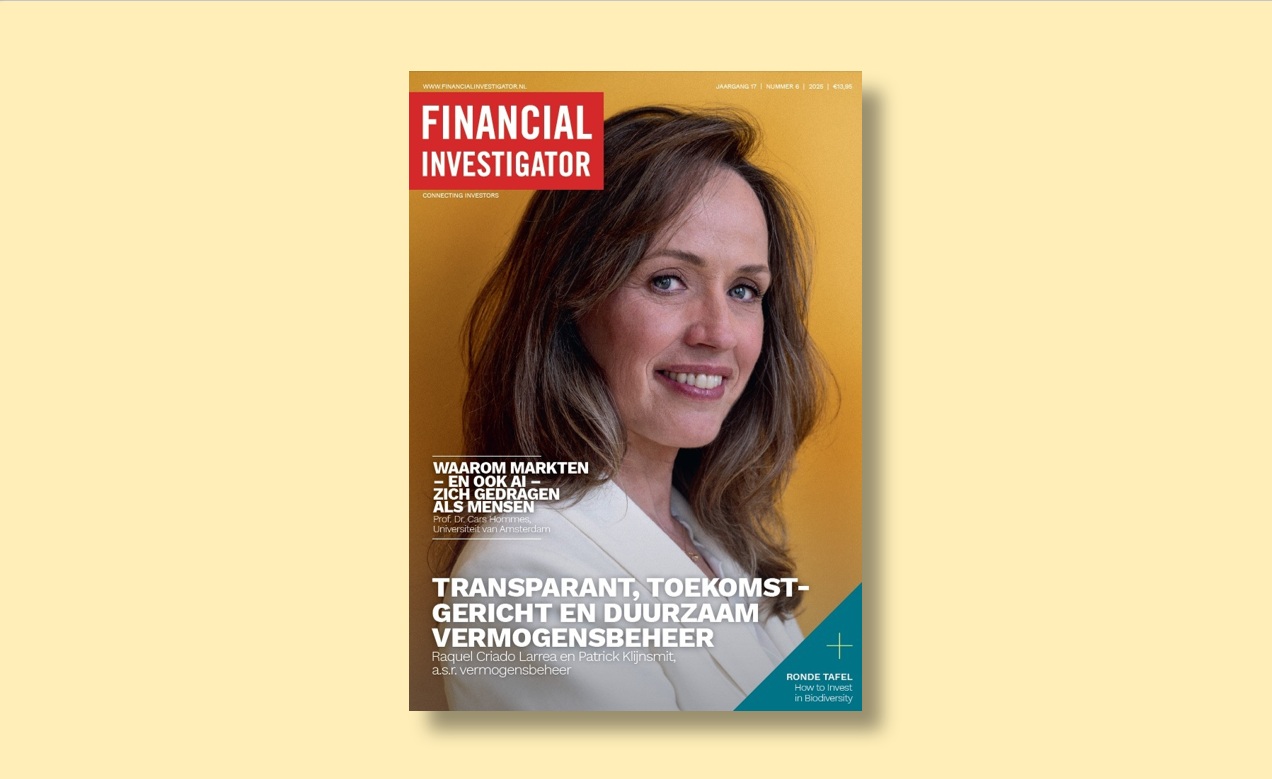Latest edition of Financial Investigator now online

This preface was originally written in Dutch. This is an English translation.
New growth cycle, old uncertainties
The Federal Reserve cut interest rates in September, probably marking the start of a global easing cycle. Other central banks are following suit, and even the ECB will not lag behind given the weak European economy. The resulting steeper yield curve points to healthier growth, stronger bank balance sheets and a lower risk of recession in the short term.
Nevertheless, the challenges facing Europe remain considerable. Germany is seeing its export position come under pressure from Chinese competition and American protectionist policies, while France is struggling with sky-high debt, the interest costs of which now amount to more than 2% of GDP (compared to 6% in the US). Such debt burdens are only sustainable in the long term with higher growth.
Artificial intelligence is often seen as the engine that can drive this necessary growth. However, in his column, Thijs Jochems emphasises that it is by no means certain that AI will actually lead to broad productivity growth. Many applications focus on market share and consumption, rather than structural efficiency gains.
This raises a fundamental question: even if AI and other innovations stimulate growth, what does that growth mean for our biodiversity? Do technological breakthroughs lead to a more resilient natural environment, or does further economic expansion actually put pressure on biodiversity? Only time will tell.
In this edition, we take an in-depth look at this tension. We organised a round table on investing in biodiversity, where experts discussed how returns and nature conservation can go hand in hand. The discussion covered not only the moral responsibility of investors, but also the opportunities that arise when biodiversity is seen as an essential economic value.
We also speak with Patrick Klijnsmit and Raquel Criado Larrea of a.s.r. asset management, who explain how they link financial and social value in their sustainable investment strategy, based on a clear focus and the conviction that engagement yields more than exclusion.
In addition, we examine how AI is not just a cost item or hype, but can actually contribute to tangible efficiency gains, for example in the field of energy saving, from smart networks that predict peak loads to algorithms that optimise production processes: technology can play a crucial role in reducing consumption and emissions. This gives AI a dual role: on the one hand as an engine of growth, and on the other as a means of making growth more sustainable.
This edition is therefore dedicated to the search for balance: how can we achieve economic growth that is not only profitable but also sustainable? The articles in this issue offer insights and perspectives that will help you seize opportunities and assess risks accurately.
We hope you enjoy reading and find inspiration!
Jolanda de Groot, Editor-in-Chief
